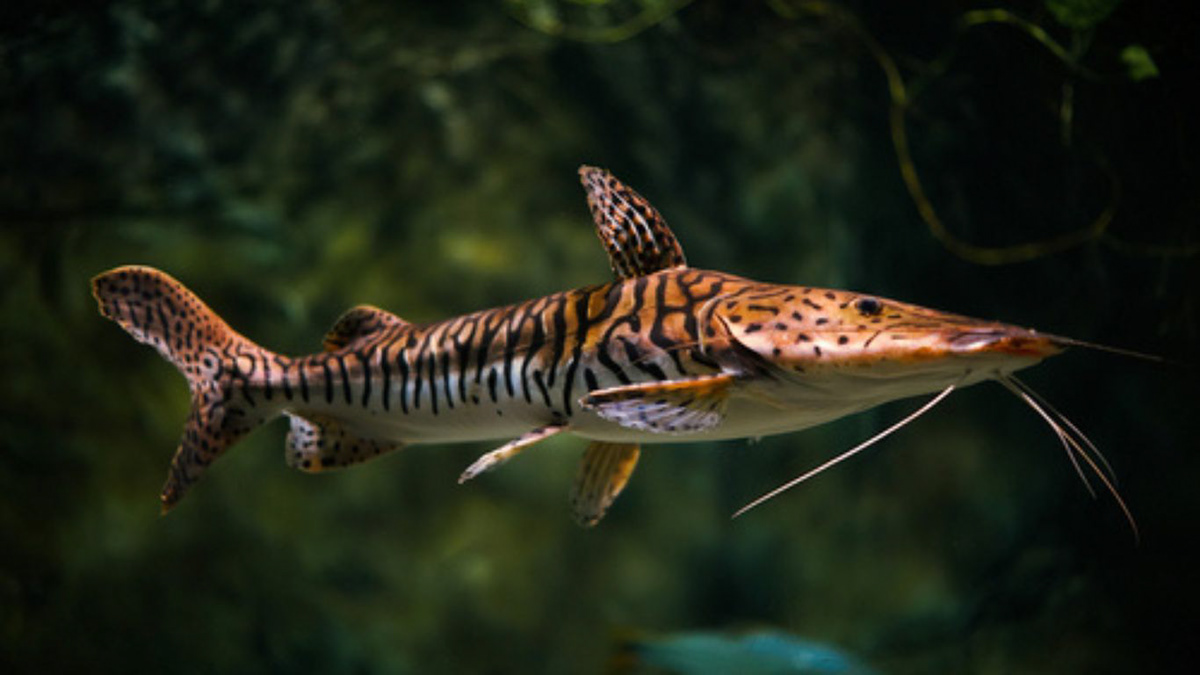Tiger Shovelnose Catfish: Majestic Giants of the Aquatic Realm
Introduction:
The Tiger Shovelnose Catfish (Pseudoplatystoma fasciatum) is a captivating and majestic species that commands attention with its impressive size, distinctive appearance, and unique characteristics. Hailing from South American river systems, these catfish are not only prized for their beauty but also for their fascinating behaviors. In this post, we'll delve into the notable features, habitat, and care requirements of the Tiger Shovelnose Catfish.
The Tiger Shovelnose Catfish (Pseudoplatystoma fasciatum) is a captivating and majestic species that commands attention with its impressive size, distinctive appearance, and unique characteristics. Hailing from South American river systems, these catfish are not only prized for their beauty but also for their fascinating behaviors. In this post, we'll delve into the notable features, habitat, and care requirements of the Tiger Shovelnose Catfish.

Physical Characteristics:
The Tiger Shovelnose Catfish is easily recognized by its elongated body, adorned with a striking pattern of dark, vertical bars on a light background, resembling the stripes of a tiger. As juveniles, they showcase a more pronounced contrast in their markings, which may fade slightly as they mature. Their most distinctive feature is their shovel-shaped snout, which gives them their common name.
The Tiger Shovelnose Catfish is easily recognized by its elongated body, adorned with a striking pattern of dark, vertical bars on a light background, resembling the stripes of a tiger. As juveniles, they showcase a more pronounced contrast in their markings, which may fade slightly as they mature. Their most distinctive feature is their shovel-shaped snout, which gives them their common name.
Habitat and Tank Requirements:
In their natural habitat, Tiger Shovelnose Catfish inhabit large rivers and tributaries with strong currents in South America, including the Amazon and Orinoco basins. When setting up an aquarium for these magnificent catfish, it's crucial to replicate their spacious and dynamic environment. A tank size of at least 250 gallons is recommended for a single Tiger Shovelnose, with additional space for each additional fish. Provide a sandy substrate, plenty of hiding spots like caves or large PVC pipes, and strong filtration to mimic the swift-flowing waters of their native rivers.
In their natural habitat, Tiger Shovelnose Catfish inhabit large rivers and tributaries with strong currents in South America, including the Amazon and Orinoco basins. When setting up an aquarium for these magnificent catfish, it's crucial to replicate their spacious and dynamic environment. A tank size of at least 250 gallons is recommended for a single Tiger Shovelnose, with additional space for each additional fish. Provide a sandy substrate, plenty of hiding spots like caves or large PVC pipes, and strong filtration to mimic the swift-flowing waters of their native rivers.
Water Parameters:
Maintaining optimal water conditions is vital for the well-being of Tiger Shovelnose Catfish. Keep the water temperature between 75-82°F (24-28°C) and maintain a slightly acidic to neutral pH level ranging from 6.0 to 7.5. Regular water changes and powerful filtration are essential to prevent the accumulation of waste in the tank.
Maintaining optimal water conditions is vital for the well-being of Tiger Shovelnose Catfish. Keep the water temperature between 75-82°F (24-28°C) and maintain a slightly acidic to neutral pH level ranging from 6.0 to 7.5. Regular water changes and powerful filtration are essential to prevent the accumulation of waste in the tank.
Diet:
Tiger Shovelnose Catfish are voracious carnivores, preying on a variety of live and meaty foods in the wild. In captivity, they readily accept a diet of high-quality pellets, carnivore-specific sinking pellets, live or frozen fish, shrimp, and other protein-rich offerings. It's important to provide a varied and nutritionally balanced diet to support their growth and overall health.
Tiger Shovelnose Catfish are voracious carnivores, preying on a variety of live and meaty foods in the wild. In captivity, they readily accept a diet of high-quality pellets, carnivore-specific sinking pellets, live or frozen fish, shrimp, and other protein-rich offerings. It's important to provide a varied and nutritionally balanced diet to support their growth and overall health.
Behavior and Compatibility:
Known for their predatory nature, Tiger Shovelnose Catfish can be territorial and may exhibit aggression towards tankmates. They are best kept in a species-only tank or with large, robust fish that won't be viewed as potential prey. Compatible tankmates may include other large catfish or similarly sized, non-aggressive fish that can withstand their presence.
Known for their predatory nature, Tiger Shovelnose Catfish can be territorial and may exhibit aggression towards tankmates. They are best kept in a species-only tank or with large, robust fish that won't be viewed as potential prey. Compatible tankmates may include other large catfish or similarly sized, non-aggressive fish that can withstand their presence.
Challenges:
One of the challenges associated with keeping Tiger Shovelnose Catfish is their potential size. These catfish can grow to over three feet in length, requiring a massive tank and long-term commitment from their keepers. Additionally, their strong predatory instincts mean they may view smaller tankmates as food.
One of the challenges associated with keeping Tiger Shovelnose Catfish is their potential size. These catfish can grow to over three feet in length, requiring a massive tank and long-term commitment from their keepers. Additionally, their strong predatory instincts mean they may view smaller tankmates as food.
Conclusion:
The Tiger Shovelnose Catfish is a captivating and impressive addition to large aquariums, captivating enthusiasts with its unique appearance and behaviors. By providing a spacious and well-equipped environment, a suitable diet, and careful consideration of their compatibility, aquarists can enjoy the grandeur of the Tiger Shovelnose Catfish as it gracefully prowls through the depths of its aquatic domain.
The Tiger Shovelnose Catfish is a captivating and impressive addition to large aquariums, captivating enthusiasts with its unique appearance and behaviors. By providing a spacious and well-equipped environment, a suitable diet, and careful consideration of their compatibility, aquarists can enjoy the grandeur of the Tiger Shovelnose Catfish as it gracefully prowls through the depths of its aquatic domain.
